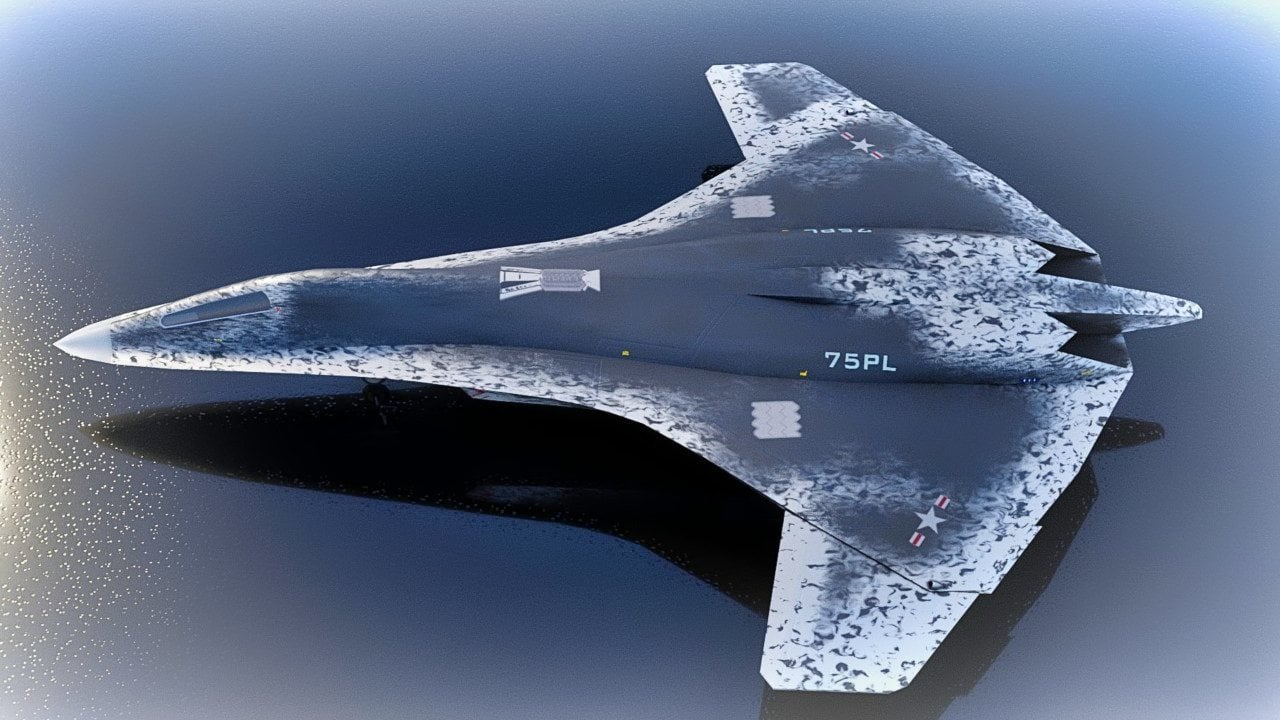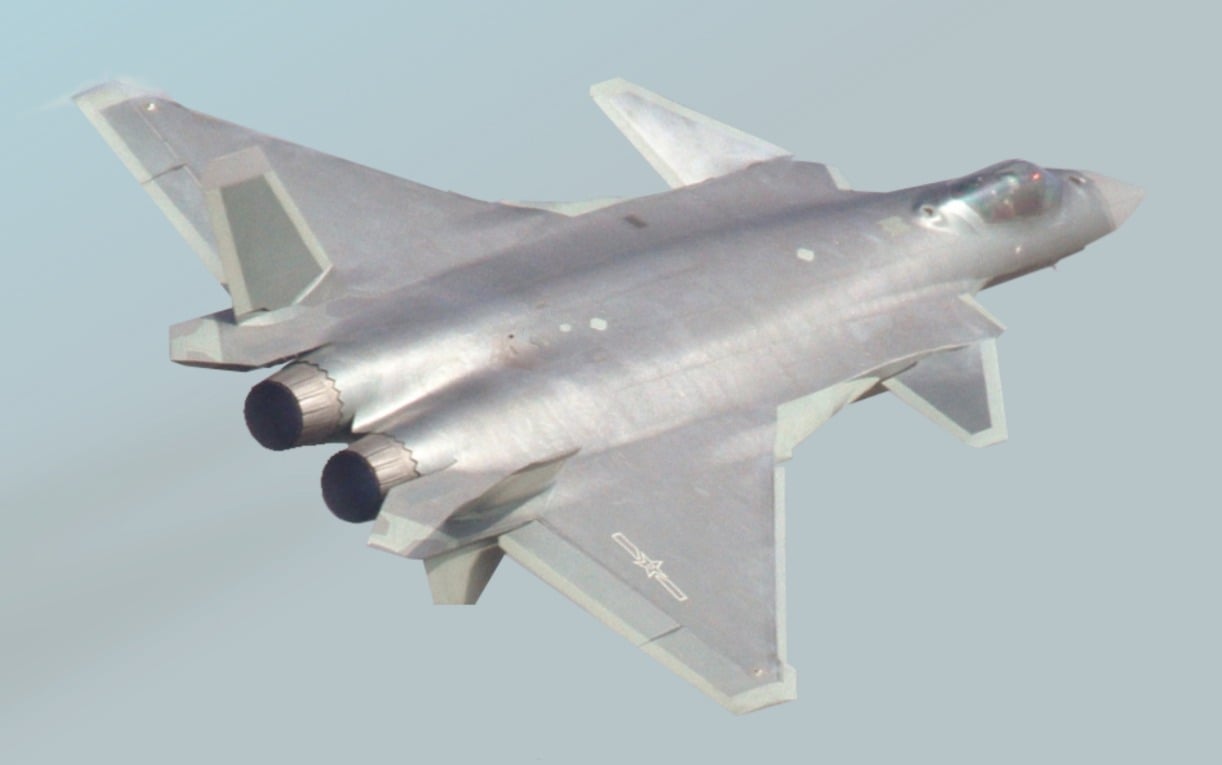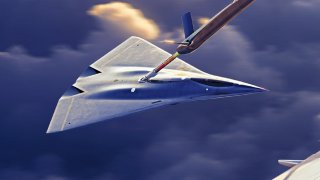U.S. Military Nightmare: China Wants NGAD 6th Generation Fighters
The United States and China are racing to develop sixth-generation warplanes, signaling intense military rivalry in a multipolar world. China unveiled a mockup of its sixth-generation fighter in 2021, aiming for deployment by 2035, while the U.S. targets 2030 for its "Next-Generation Air Dominance" (NGAD) platform.
Summary: The United States and China are racing to develop sixth-generation warplanes, signaling intense military rivalry in a multipolar world. China unveiled a mockup of its sixth-generation fighter in 2021, aiming for deployment by 2035, while the U.S. targets 2030 for its "Next-Generation Air Dominance" (NGAD) platform.

-Both nations plan to integrate these aircraft into complex systems with advanced weapons and unmanned aerial vehicles.
-Although the U.S. might deploy first, China's ability to produce in larger quantities and learn from U.S. mistakes could level the playing field.
-Concerns about industrial espionage and the high costs of innovation further complicate the race.
U.S. vs. China: The Race for Sixth-Generation NGAD Warplanes Heats Up
At a time when everyone is still racing to build their own fleet of fifth-generation warplanes (and struggling to accomplish such a herculean task), both the United States and the People’s Republic of China are already racing toward building an even more complex (and expensive) sixth-generation warplane. This race between two rival powers is yet another example of how the world has moved away from the so-called “unipolar moment” that saw the Americans as the unquestioned dominant global power.
Clearly, the world is in a multipolar environment—specifically, a tripolar system between the United States, China, and Russia—where the chance of a great power conflict is higher than ever before. The, frankly, absurd quest to build sixth-generation warplanes is yet another example of just how serious the rivalry between the great powers has gotten.
But the race will only become more intense, and the stakes will only go higher.
Unveiling China’s Sixth-Generation Warplane
The Chinese shocked the world in 2021 when a mockup of their proposed, tail-less sixth-generation warplane appeared at an air show. Since then, concept images of the plane have appeared sporadically on social media. The head of Chengdu Aerospace, the Chinese firm designing the new sixth-generation warplane, believes that the plane could be ready for deployment as early as 2035.
The Americans, however, claim their sixth-generation warplane will be deployed as early as 2030 (although, given the constraints of America’s defense industrial base, we probably shouldn’t hold our breath on that one).
It has been speculated that, like America’s “Next-Generation Air Dominance” (NGAD) platform, which is the name the Pentagon is giving to its sixth-generation warplane development project, China’s will also be a “system of systems.” Basically, the world’s greatest militaries have determined that, to defeat each other in aerial combat, they can no longer just build a great warplane. They have to make those planes part of a complex system of next-generation weapons as well as unmanned aerial vehicles (the so-called “Loyal Wingman” system).
Even if the American timeline for deploying the sixth-generation warplane is accurate, and the plane beats its Chinese sixth-generation rival to the unfriendly skies by five years, the fact remains that China can still make its plane in far greater numbers than can the Americans. What’s more, China would benefit from being second because it could learn from whatever mistakes the Americans made in their rush to get the plane into service earlier than China.
In 2010, Oded Shenkar wrote an excellent treatise on the business of innovation versus imitation. That book, Copycats, detailed how more imitative firms usually beat out their more innovative rivals because they could just copy the work of those innovative rivals and then avoid whatever mistakes the innovators made—saving time, money, and then being able to innovate from there. We have already seen how China’s J-20 fifth-generation warplane, which came after the American fifth-generation F-22A Raptor and F-35 Lightning II, has managed to stay apace with the American variants of those planes.

America Cannot Keep Its Secrets from China
So, while it’ll be nice for the Air Force and Navy to get their sixth-generation systems going before the Chinese can, that doesn’t mean the Chinese are out of the race. It means that they’ll have time to learn from America’s mistakes. And let us not forget the important role that industrial espionage plays in China’s military strategies. Whatever China cannot create on its own, it will happily steal from its rivals. There is a reason that the J-20 looks suspiciously like a cross between the F-22 Raptor and the (failed) Russian MiG-1.44. It isn’t that China cannot innovate on its own. It’s simply that, in the context of the current geopolitical environment, it’s cheaper and easier to copy from Beijing’s rivals and then innovation within the framework of that copy.
Few American military leaders really believe that the J-20 is junk. Yet, they recognize that it benefited mightily from pilfered American technology. That doesn’t mean that these Chinese systems are somehow not dangerous to American airmen. The problem for the Americans is that, as the nation doing the real innovation into this program, it will invariably end up spending more time and money developing a system that will simply be easily stolen by their main strategic rival in China.
The Chinese military will benefit from America’s investment while not having to make anywhere the same level of investment.
Why Even Bother with a Sixth-Generation System?
And does the United States—or anyone—really need to be making a sixth-generation system when the fifth-generation systems have so badly struggled? Yes, the F-35 and F-22 are technological marvels. But they’re expensive.
And as one F-35 pilot told me earlier this year, “The F-35 is always being updated because the requirements for the plane came from the 1990s, a time when there were no significant near-peer rivals to the United States.” The threat environment today is far different from what it will likely be even five years from now. Not to mention the fact that the future of air power is no longer in the wild blue yonder. It’s found in space.

All this money being splurged on a sixth-generation system in the U.S. Air Force and Navy would probably be better spent building systems to ensure America’s space dominance. Alas, the Pentagon is set in its ways. And everyone loves a sleek new plane.
About the Author
Brandon J. Weichert, a National Interest national security analyst, is a former Congressional staffer and geopolitical analyst who is a contributor at The Washington Times, as well as at American Greatness and the Asia Times. He is the author of Winning Space: How America Remains a Superpower (Republic Book Publishers), Biohacked: China’s Race to Control Life, and The Shadow War: Iran’s Quest for Supremacy. Weichert can be followed via Twitter @WeTheBrandon.


